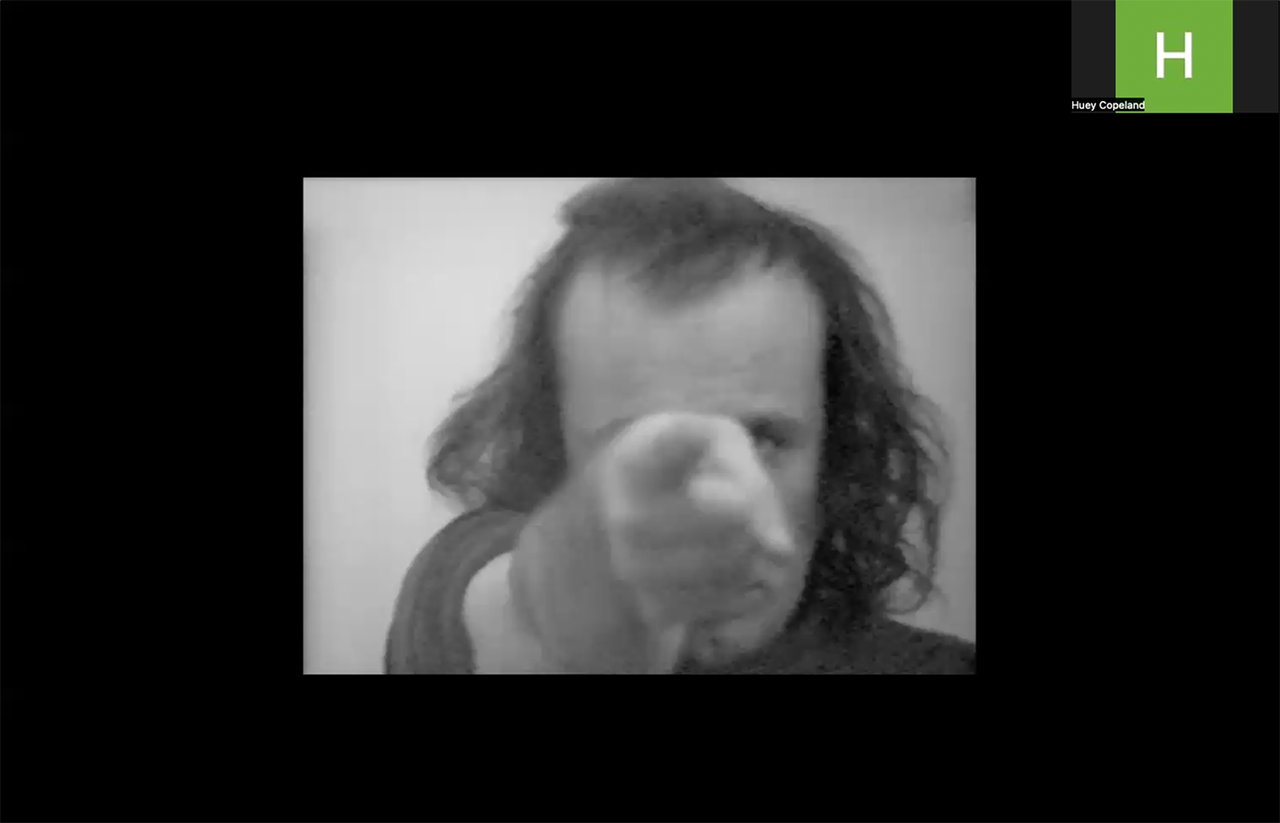RECORD AND REFLECT A Questionnaire on (Video) Lectures by Huey Copeland

Huey Copeland, „Voice Lessons“
QUESTION: You were free to choose the topic of your contribution. What did you decide on in connection with the theme of this issue and why?
ANSWER: My choice of topic was informed by quite run-of-the-mill considerations of professional capacity – “What relevant material do I have at hand that has not already been committed to another project or platform?” – as well as the issue’s thematics and the current preoccupations of my scholarship, which has forthrightly turned toward intellectual autobiography as a critical mode and a writerly genre in the last few years. These criteria led me back to “Voice Lessons,” a functionally homeless lecture delivered at a Festschrift for art historian Anne Wagner in 2010 but never before made available for wider consumption. Re-performing this particular script was an opportunity to sit with and exacerbate the tensions – between individual and collective, address and appeal, confession and insight, esthesis and information, text and performance, presence and absence, distance and proximity – inherent in the lecture as a form.
Q: This issue makes a distinction between lecture and lecture performance. Do you? Where and how do you draw the line?
A: Usually in my practice, a lecture refers to an unpublished script that may be engaged by select individual readers at any time or place, while a performance is an enfleshment of that text for a live audience whose real-time affects and nonverbal responses can shift not only the delivery but also the substance of the lecture itself. With repeated iterations, each performance comes to dialectically alter the text and vice versa.
Q: What specific forms of knowledge do academic or artistic lecture formats offer?
A: I find lectures most helpful in providing insights into a cultural practitioner’s unstated allegiances: the different tones, accents, and nonverbal cues that a speaker imparts to varying phrases flesh out, in both complimentary and contradictory ways, my sense of the sub/un/conscious ambitions and assumptions at work in other domains of their practice.
Q: Which aspects of embodiment are important to you when giving a lecture/performance?
A: Perhaps unsurprisingly, the voice is the most vital aspect of my lecture performances; my visual presence is usually a distraction more than anything else. This is especially true, as psychoanalyst Frantz Fanon reminds us, given the irrational fantasies and overdetermined associations set off by the mere sight of black skin within predominantly white American and European cultural contexts. Recording “Voice Lessons” with the camera off for TZK allowed me to put this precept into practice and, in some small measure, to refuse the incessant demand for the “Negro” to appear as evidence of the racial diversity and ethical legitimacy of non-black discursive frames.
Q: How do you find your rhythm?
A: For the last 10 years or so, I’ve begun public lectures with a kind of stutter: “Good evening. Good evening!” As in the black church sermons of my youth, the second, emphatic greeting, or call, is intended to solicit a verbal response from the audience, to interpellate them as an embodied community of active listeners rather than a silenced abstract crowd. Doing so enables me to establish a rhythm and a rapport through which the lecture can unfold, both of which are particularly important for me as a queer scholar of African descent who often speaks to majority non-black and presumptively heteronormative audiences whose implicit biases can deform their ability to countenance my thinking or even hear me at all.
Q: Where is your focus during the lecture/performance?
A: My focus is on enlivening the text so that the audience can and wants to follow the particular flow of my argument as well as the general drift of my “critical posture” (to borrow a phrase from cultural theorist Hortense Spillers).
Q: What motivates you to attend a lecture/ performance in person, given the constant surplus of information and art and the shortage of time that characterize our everyday lives?
A: My motivation to attend a lecture in person relies upon my being, in order: allied with, supportive of, curious about, and/or responsible to the speaker.
Q: Which lecture/performance was particularly memorable for you and why? (If the answer is Robert Morris’s 21.3 from 1964, please give another example.)
A: Hands down, the most memorable lecture I’ve had the pleasure of attending was a job talk by the art historian Hannah Feldman delivered almost 20 years ago. Mincing no words, she began her pitch for a position in “Post-War Art” by declaring that the advertisement’s – and the department’s – hegemonic periodization of the field in relation to World War II was not only myopically Eurocentric but also a product of the very colonial assumptions that her work is at pains to reveal and undo. As in her subsequent publications, most signally From a Nation Torn: Decolonizing Art and Representation in France, 1945–1962 (Duke University Press, 2014), Feldman’s performance – polemical, fearless, yet matter-of-fact – took our assumptions to task and the discipline by the jugular. (She got the job.)
Q: Who was your (real or imagined) audience when you recorded this video lecture?
A: My audience of one for this recording was our dog, Cora. In re-performing the script, however, Anne, my Berkeley confreres, the readers of TZK, and the divergent expectations and desires of each all jostled for attention in my mind, especially in re-speaking those more confessional moments of the script that can easily strike one now as overwrought or ingratiating. While the lecture commits these vulnerabilities to the page, its re-performance opens up space for distance and ambivalence in both tone and voicing, as my brief has shifted from “giving [Anne] the love” to “providing a critical account [of my ‘self’].”
Q: What shoes were you wearing?
A: None.
Huey Copeland is Andrew W. Mellon Professor of Modern Art and Black Study at the University of Pittsburgh.
